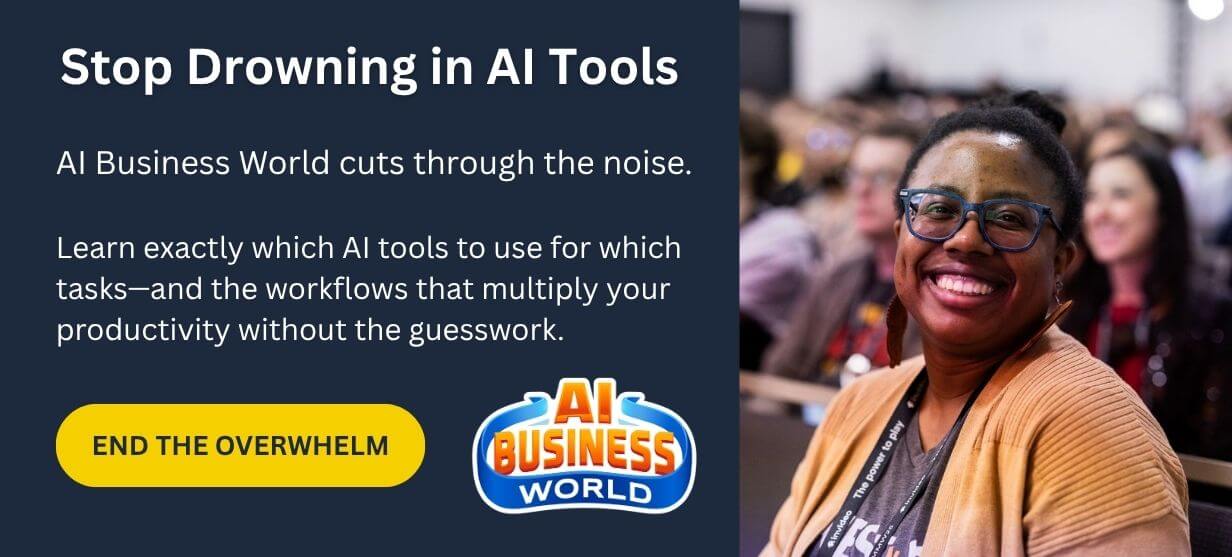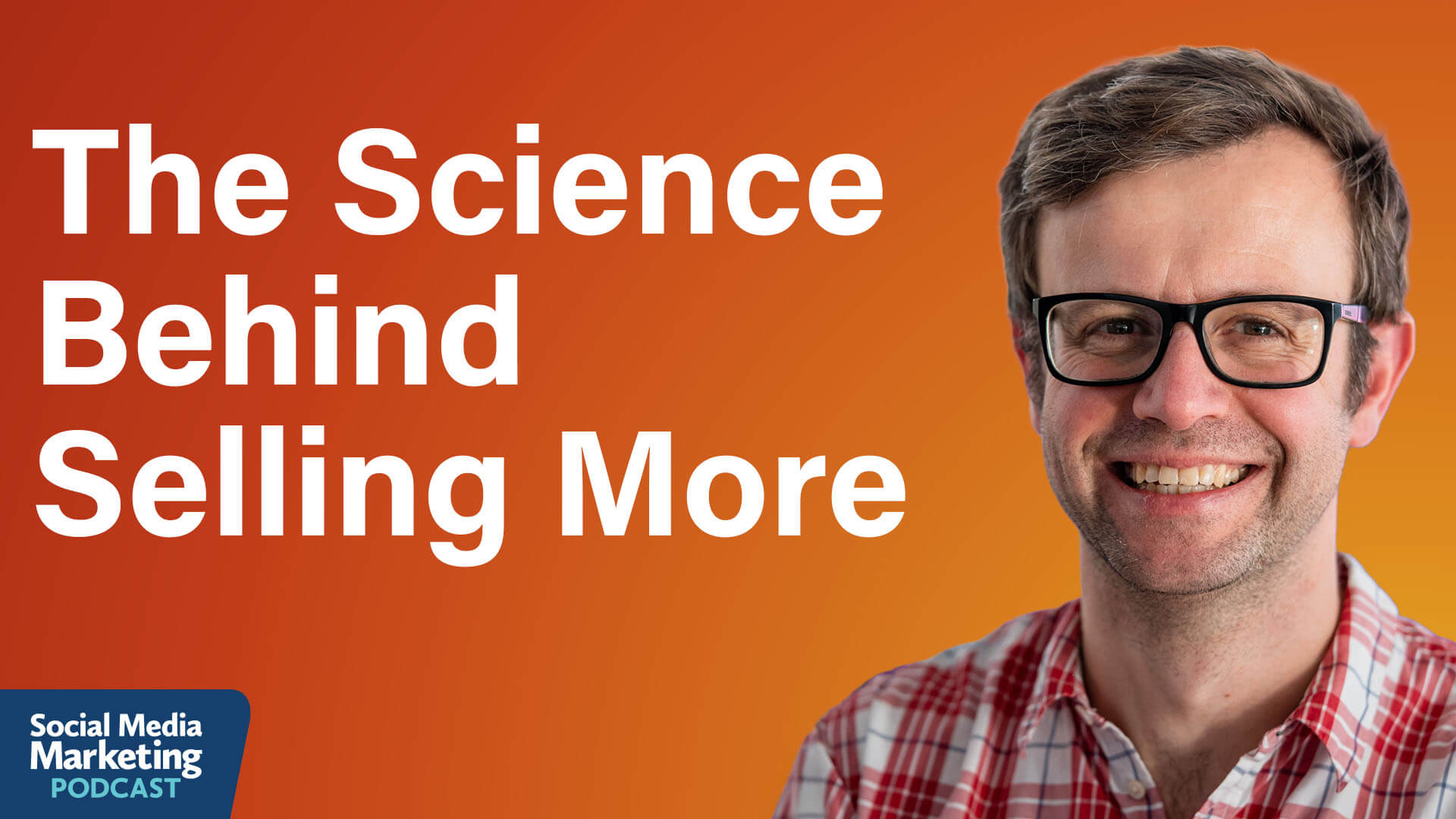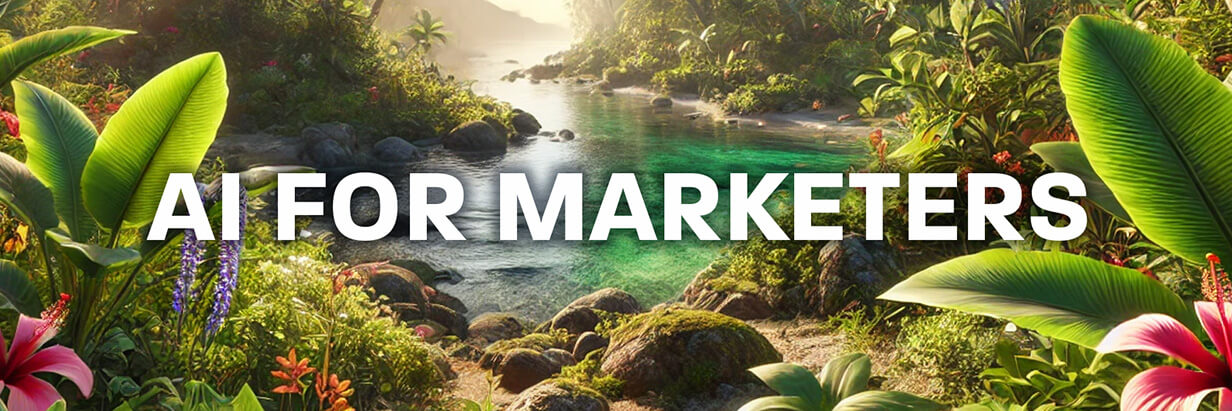Today's Guide to the Marketing Jungle from Social Media Examiner...
presented by 
The weekend is almost here, Alluser! Before you unplug, here's one last round of insights and updates. Whether you read them now or save them for later, you won't want to miss these.
In today's edition:
-
7 Ways to adapt your campaigns to work with Meta Andromeda
-
Science-backed marketing tactics that sell more
-
Why your AI content still sounds generic and how to fix it
-
🗞️ Industry news from OpenAI, Snapchat, and more

How to Use Meta Andromeda to Advantage
Meta's latest algorithm shift—nicknamed Andromeda—is changing the rules for advertisers. Gone are the days when tweaking targeting levers was your main optimization play. Now, Meta wants your creative to do the hard work. But what does that actually mean?
"Creative diversification" sounds simple, but it's redefining how marketers think about ad strategy. From dynamic formats to AI-generated visuals and primary text variations, there's a whole new set of tools and expectations that could make or break your campaign results.
You don't need more ads; you need smarter, more varied creative that speaks directly to different customer types across formats and placements.
This guide from Jon Loomer lays out exactly how to adapt your campaigns and shares practical use cases that even solo marketers can implement quickly. Read more here.


Applying Behavioral Science for Improved Conversions
If you work in marketing or advertising, you're fundamentally in the business of behavior change. Every campaign you create attempts to get people to switch from a competitor brand, pay more for your products, or buy more frequently. Each of these goals requires your audience to change its behavior.
Behavioral science is the experimentally based, robust study of what effectively influences people's behavior. This field doesn't examine what people claim influences their decisions, but rather what actually drives their actions.
For marketers, this distinction is critical because it reveals the gap between what consumers say they want and how they actually behave. By understanding and applying these principles, you can work with human nature rather than against it.
How to Use Pricing Psychology In Your Marketing
Pricing represents one of the most direct applications of behavioral science because price shapes perception in ways that defy pure logic.
Once you've set your price, you need to make that price as appealing as possible.
One powerful pricing principle is extremeness aversion, which describes how people tend to opt for the middle option when given three choices. Amos Tversky demonstrated this in 1992. He showed people two cameras. The basic camera cost $169, and a fancier camera with more features cost $239. When people chose which one to buy, there was an exact fifty-fifty split.
Tversky then recruited a completely fresh group of people and showed them the same two original cameras at the same prices with the same benefits. But he introduced a super premium camera at $469. A few people picked that super premium option, about 21%.
The fascinating change occurred in how people viewed the original two cameras. Previously, those two cameras were chosen at a one-to-one ratio. With the addition of the super premium option, that ratio shifted to one-to-three. The very basic camera dropped to 22% of sales, while the premium camera, now the middle option, jumped to 57% of sales.
What Tversky demonstrated is that people don't just pick based on the price, quality, and inherent attributes of a product. They are deeply influenced by what that product is surrounded by. The rule of thumb is that people don't want to go for the cheapest option because it might be low quality and they'll look mean. They also don't want the most expensive because it's probably over-engineered, overpriced, and they'll look like a show-off. People gravitate toward the middle.
The middle price of $239 is approached very differently depending on whether there are two options or three options. When compared only with the $169 camera, it looks $100 more expensive, and consumers think they're being wasteful. But when you've added the super premium $469 camera, people can now reframe that $239 cost as a $200 saving compared to the most expensive option.
If you have a monthly offering and an annual offering and you want people to pick the annual one, consider adding a two-year or four-year purchase option. Hardly anyone will pick it. Its role isn't to be picked. Its role is to reframe what the annual option looks like. Now the annual option doesn't look like much of an inconvenience or too long a time period because it's a year or two years less than the really long option.
Other topics discussed include:
-
Why Behavioral Science Matters for Marketers
-
How Humans Actually Make Decisions
-
Making Your Price Feel Smaller
-
Raising Your Price vs. Discounting Your Price
-
2 Ways to Establish Your Product as a Quality Option
-
How to Use Behavioral Triggers to Convert Consumer Intent into Customer Action
Today's advice is provided with insights from Richard Shotton, a featured guest on the Social Media Marketing Podcast.
Watch the full interview on YouTube
How to Make ChatGPT Sound Like YOU (Not Everyone Else)
Ever feel like your ChatGPT content reads more like a robot than you? You're not imagining it. Even seasoned marketers are finding their AI-generated content a little… meh. It's not that you're doing it wrong; it's that you're skipping a vital step.
Our latest video is 8-minute walkthrough that uncovers the quiet truth behind standout AI content. It's not about better prompts or smarter edits. It's about reshaping how you work with AI.
You'll get an insider's look at a five-step system that transforms ChatGPT from content machine to creative partner—one that captures your tone, values, and voice. Whether you're refining long-form content, repurposing for social media, or just trying to sound less like everyone else, this process is built for marketers who want quality without chaos.
If you're overwhelmed by AI hype but eager to make it work for your brand, this is the missing link you've been looking for. Watch more here.

OpenAI Launches ChatGPT Atlas Browser for macOS: OpenAI has introduced ChatGPT Atlas, a new macOS web browser that integrates ChatGPT directly into the browsing experience. With features like Agent Mode, users can delegate tasks—such as research, shopping, or summarizing content—without switching tabs. Atlas includes browser memories and granular privacy controls to personalize assistance while protecting user data. Agent Mode is now in preview for Plus, Pro, and Business users, offering deeper task automation within a secure framework. Versions for Windows, iOS, and Android are coming soon. OpenAI
ChatGPT to End WhatsApp Support by January 2026: ChatGPT will no longer be accessible on WhatsApp starting January 15, 2026, following changes to WhatsApp's policies. To continue conversations and preserve chat history, users are encouraged to link their phone number to a ChatGPT account through the 1-800-ChatGPT contact profile. ChatGPT remains available on iOS, Android, web, and MacOS (via ChatGPT Atlas), offering advanced features like voice interaction and file uploads. Conversations won't transfer automatically after the cutoff date, so linking your account early is recommended. OpenAI
Snapchat's Imagine Lens Now Free for All U.S. Users: Snapchat has expanded access to its AI-powered Imagine Lens, allowing all U.S. users to generate and share custom images from text prompts—no subscription required. Originally limited to Lens+ and Platinum subscribers, the feature is now rolling out to Canada, Great Britain, and Australia, with additional markets to follow. Users receive a limited number of free generations and can find the Lens in the Carousel or via search. Snapchat encourages fun, creativity, and transparency when sharing AI-generated content. Snapchat
YouTube Expands Community Tools, Live Features, and Launches Creator Reinstatement Pilot: YouTube is rolling out several updates this week, including the launch of Community posts on desktop, enabling both creators and viewers to post and moderate content via computer. A new AI-powered Smart Q&A sticker is also available on mobile live streams, offering low-friction audience interaction. Additionally, a new pilot program allows select previously terminated creators to request the creation of a new channel after a year, though eligibility is limited. To celebrate Halloween, themed gifts are now available on vertical livestreams through November 3. YouTube
What Did You Think of Today's Newsletter?
Michael Stelzner, Founder and CEO
P.S. Add
michael@socialmediaexaminer.com into your contacts list. Use Gmail?
Go here to add us as a contact.
We publish updates with links for our new posts and content from partners. Your information: Email:
tukangpostoemel@gmail.com Opted in on: 2021-09-06 17:20:47 UTC.







